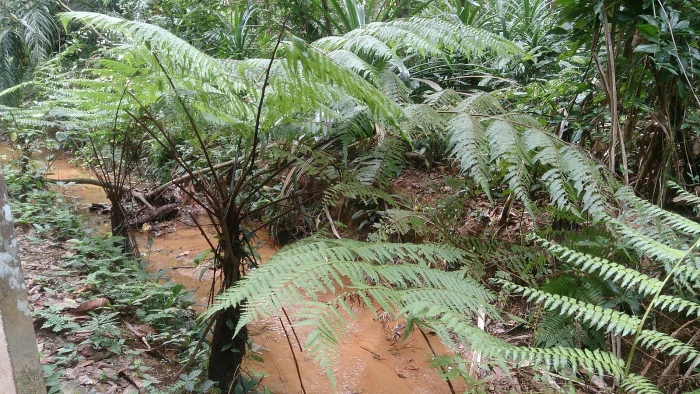Tree Fern
(Alsophila latebrosa)
Tree Fern (Alsophila latebrosa)
/
/

Mokkie
CC BY-SA 3.0
Image By:
Mokkie
Recorded By:
Copyright:
CC BY-SA 3.0
Copyright Notice:
Photo by: Mokkie | License Type: CC BY-SA 3.0 | License URL: https://creativecommons.org/licenses/by-sa/3.0 | Uploader: Mokkie | Publisher: Wikimedia Commons |




Estimated Native Range
Climate Requirements for Pasco, Washington
| This Plant | Your Site | Plant Suitability for Your Location | ||
|---|---|---|---|---|
| • Precipitation | 104" - 140" | 8" | Your precipitation may be insufficient for this plant. Irrigate N" / year. | Irrigate N" / year |
| • High Temp. | 76°F - 90°F | 90°F | Your summer temperatures are normal for this plant. | Excellent |
| • Low Temp. | 56°F - 73°F | 27°F | Your winter temperatures may be too cold for this plant | Too cold |
This plant should grow well at your location with about N inches per year (Y minutes per month) of irrigation.
Summary
Alsophila latebrosa, commonly known as Tree Fern, is an evergreen fern native to the moist and shaded understory of tropical rainforests in Southeast Asia, including regions of Indochina. It can reach a height of 10-12 feet (3-3.6 meters) and a width of 4-6 feet (1.2-1.8 meters), with a slender trunk topped by a crown of arching, lacy fronds that can span several feet in length. The fronds are bright green and create a delicate, feathery canopy.
Tree Ferns are valued for their prehistoric appearance and lush foliage, making them popular in tropical and subtropical gardens. They are often used as focal points in shaded garden areas or as part of a fernery. Alsophila latebrosa requires consistently moist soil and high humidity to thrive, mimicking its natural rainforest habitat. It prefers part shade to full shade, as direct sunlight can scorch the fronds. While it can tolerate a range of soil types, it grows best in well-draining, fertile soil rich in organic matter. Due to its size and form, it is not typically grown indoors but can be a magnificent addition to outdoor spaces where conditions allow.CC BY-SA 4.0
Tree Ferns are valued for their prehistoric appearance and lush foliage, making them popular in tropical and subtropical gardens. They are often used as focal points in shaded garden areas or as part of a fernery. Alsophila latebrosa requires consistently moist soil and high humidity to thrive, mimicking its natural rainforest habitat. It prefers part shade to full shade, as direct sunlight can scorch the fronds. While it can tolerate a range of soil types, it grows best in well-draining, fertile soil rich in organic matter. Due to its size and form, it is not typically grown indoors but can be a magnificent addition to outdoor spaces where conditions allow.CC BY-SA 4.0
Plant Description
- Plant Type: Fern
- Height: 10-12 feet
- Width: 4-6 feet
- Growth Rate: Moderate
- Flower Color: N/A
- Flowering Season: Non-Flowering
- Leaf Retention: Evergreen
Growth Requirements
- Sun: Part Shade, Full Shade
- Water: Medium, High
- Drainage: Medium
Common Uses
Deer Resistant
Natural Habitat
Moist and shaded understory of tropical rainforests in Southeast Asia
Other Names
Common Names: Paku
Scientific Names: Alsophila latebrosa, Cyathea latebrosa, Alsophila longipinna, Cyathea leptolepia, Cyathea leucocarpa, Hemitelia rudimentaris, Alsophila lastreoides, Alsophila leucocarpa, Cyathea lastreoides
GBIF Accepted Name: Alsophila latebrosa Wall.